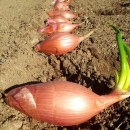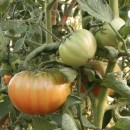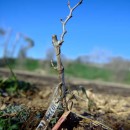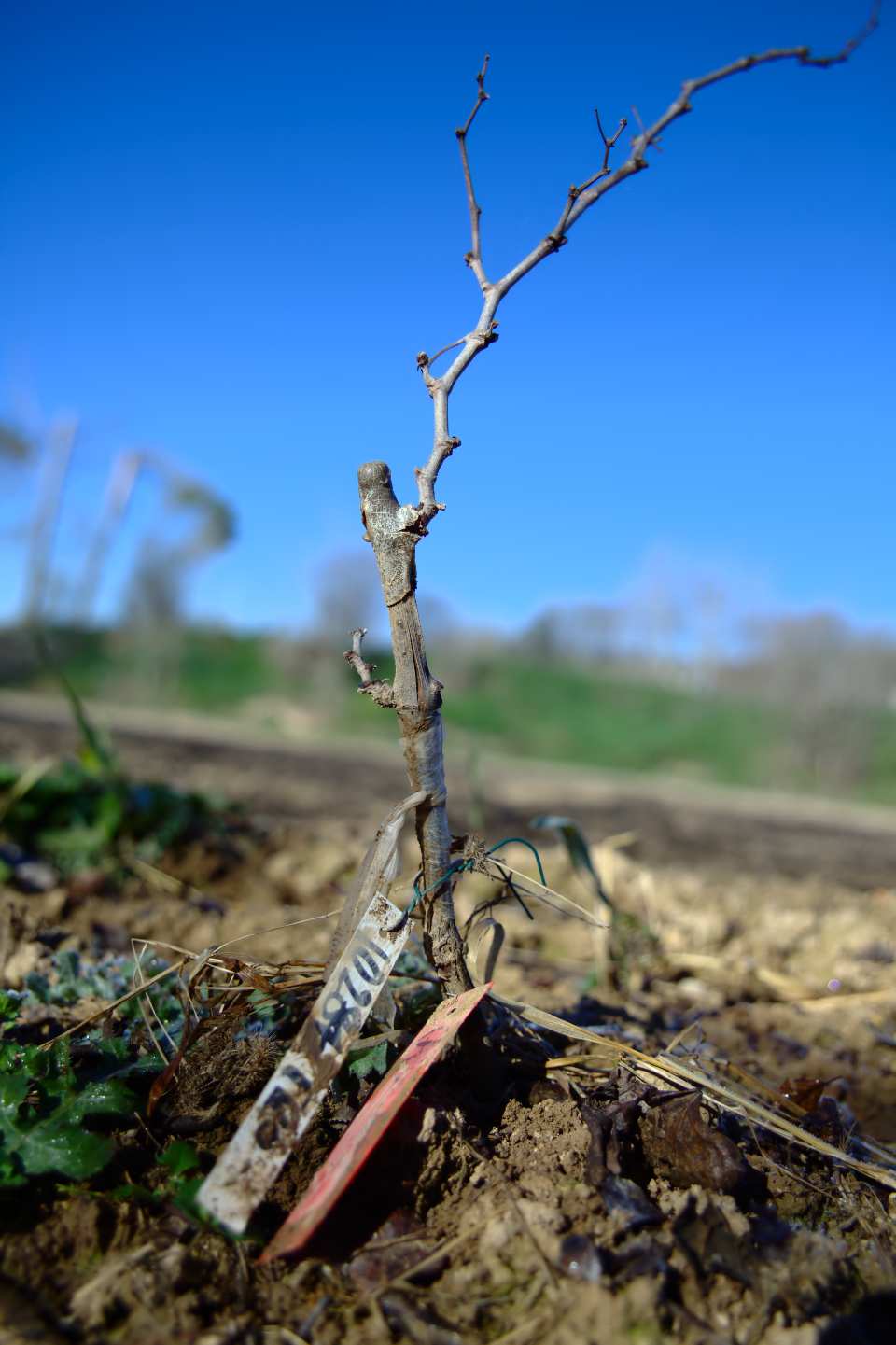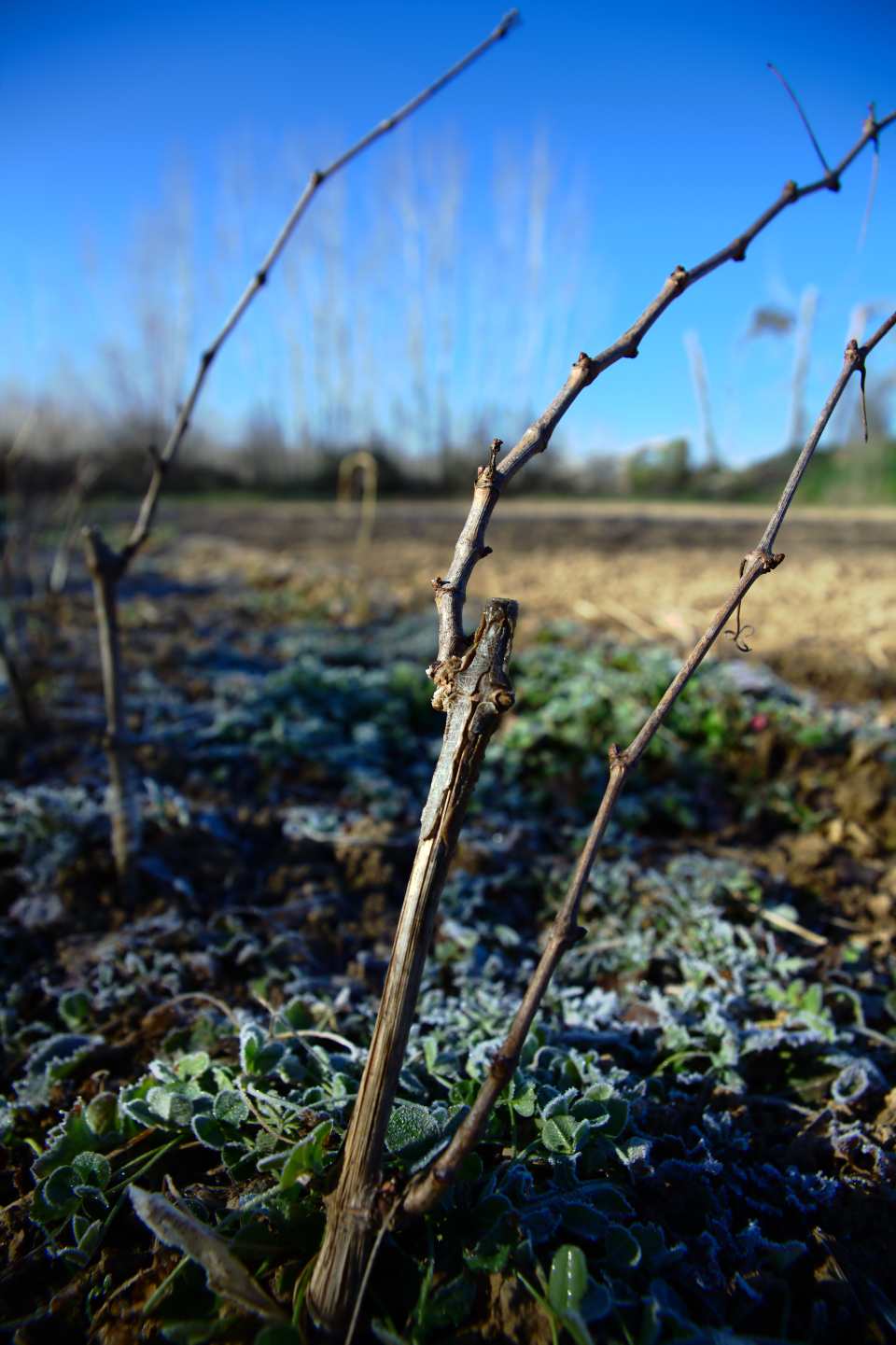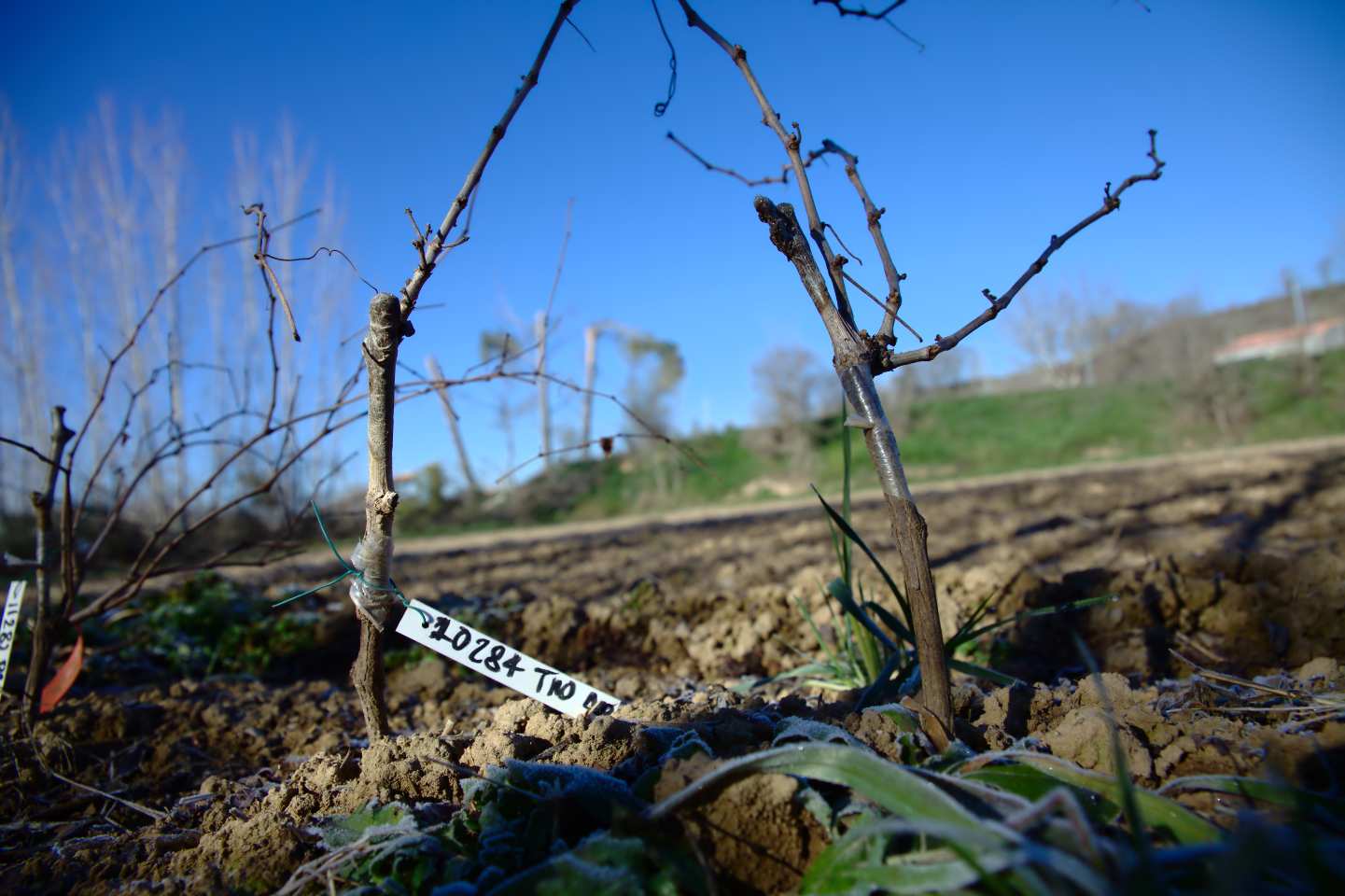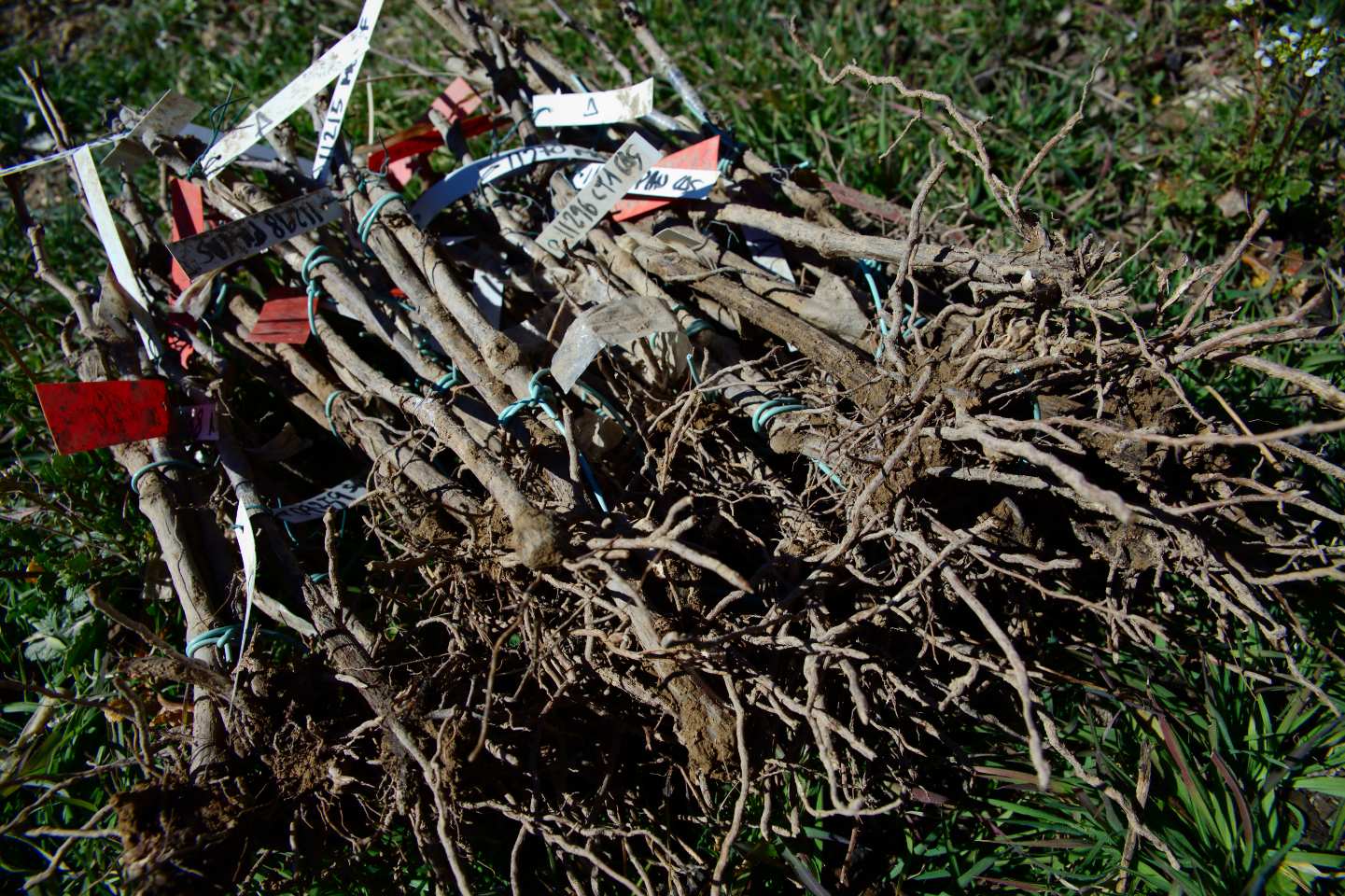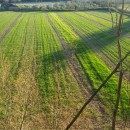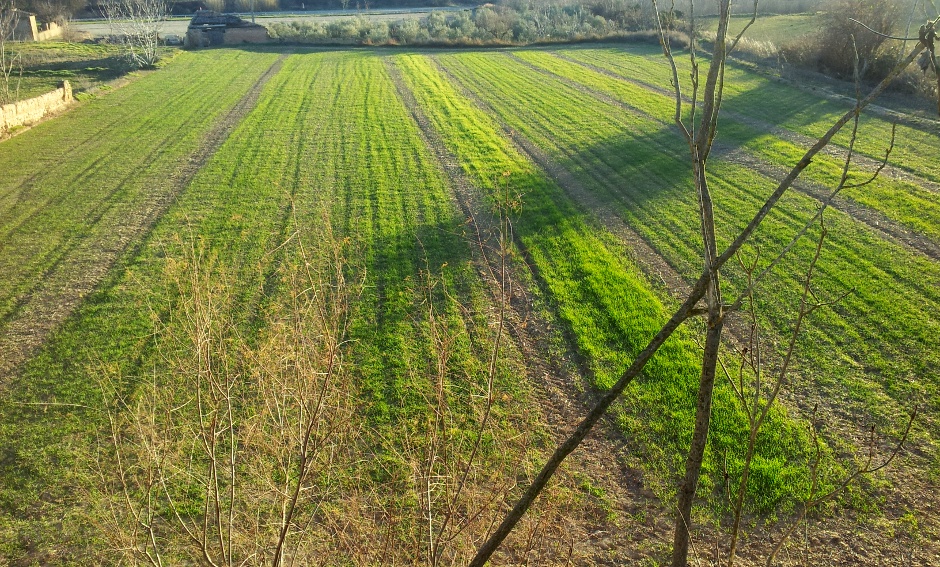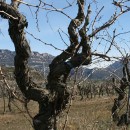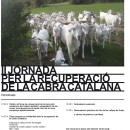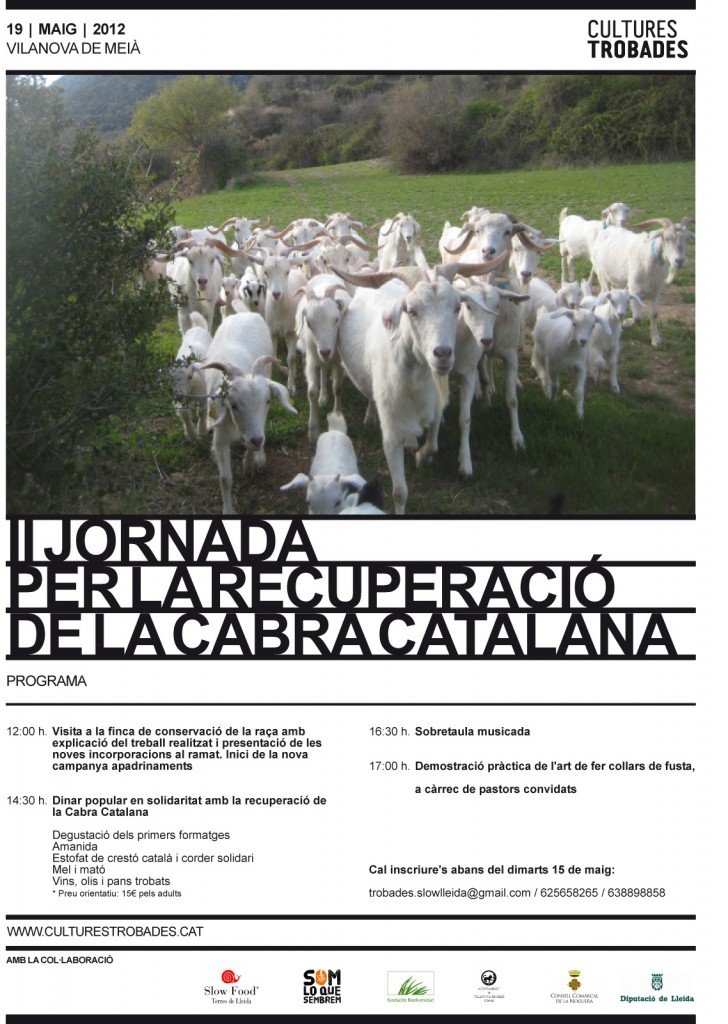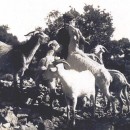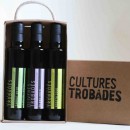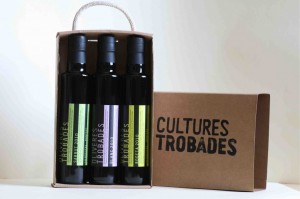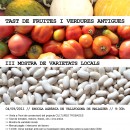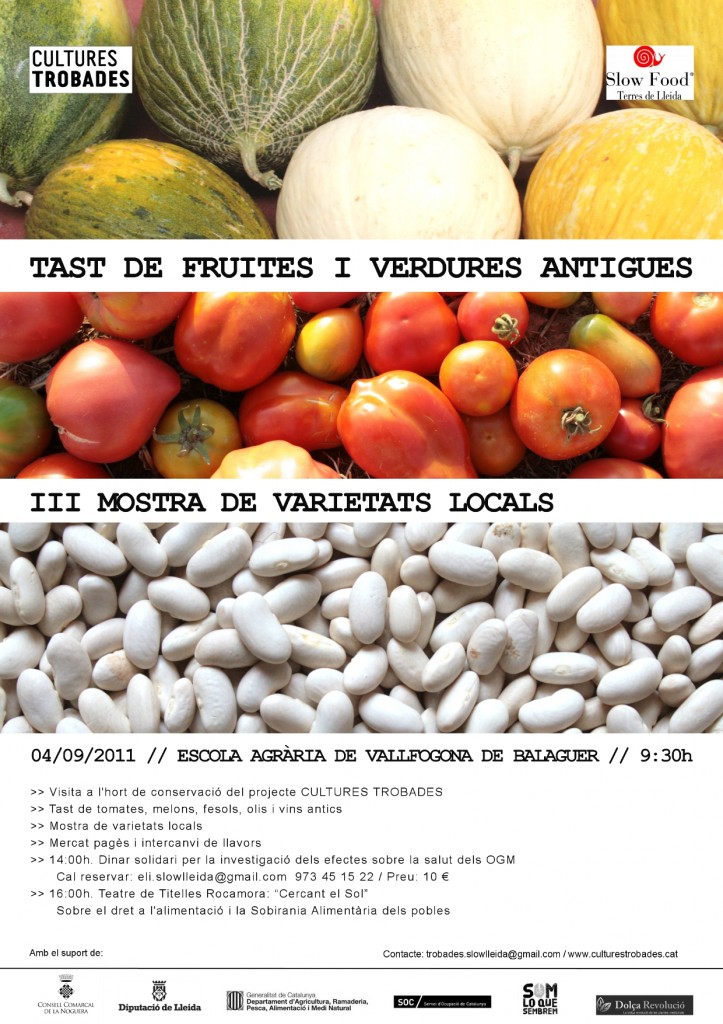CATALAN GOAT, AN ancient race
Santiago Alvarez Bartolomé
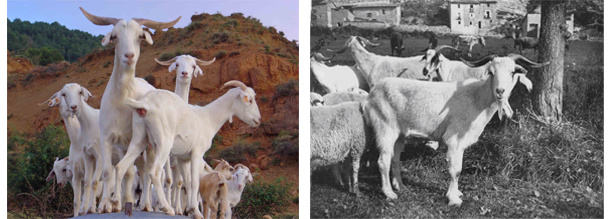
Left handed: goats Catalan Pallars Jussà year 2004 (Author: Santiago Alvarez Bartolomé)
right: Goats Catalan Alta Ribagorça year 1942. Lleida Studies Institute (Author: Claudio Gomez- Degree)
The Catalan goat breed is ancient and widely documented, last century, has seen its population decrease to be considered extinct. The area distribution center, located in the regions of the Pyrenees and Pre-Pyrenees and the Franja, has been reduced to be one small town in the area of Montsec. It is a race made up of robust animals, sizable and white layer, historically selected for handling extensive mountain led to the production of goat meat and Crest. The last known Catalan goat herd was found in 2005 Toulon and San Salvador, currently, leads an initiative for the conservation and re-introduction of the race within the project of Slow Food CULTURES FOUND Lleida.
Maneig traditional Catalan goat
The goat was a very important species for rural economies of large areas of territory, where abundant cattle, because it could get meat and milk, much needed food in Mediterranean climate regions. The milk at the same time could also be transformed into cheese to be consumed in times of shortage. Goat and sheep milk, alone or mixed, are those who have contributed so generously to the tradition of cheese Catalonia. Using different systems of coagulation and maturation have been achieved many kinds of cheese, unfortunately also disappear and you have to work to get them.
Since ancient times, the Pyrenees, Xisqueta migrating flocks of sheep that raised and lowered the Plan of Lleida castrated goats were guided by great, receiving the name "Creston” and which is supplied with an abundance of spectacular variegated bells magic symbols that should help fulfill its role as a guide. In many nomadic sheep not goats were also used to facilitate the breeding of those lambs that had been orphaned or who came from parts doubles where the mother was not able to carry them out. These goats were also important because kids produced and during some seasons of the year their surplus milk were exploited by the shepherds for their own consumption and in some cases to produce cheese.
In the Montsec have always been built exclusively for goat herds that received the name “cabrades”. This handling system still exists in some localities, generally away from the influence of other economic activities. In these territories, sheep and other livestock species have not been able to take advantage of as efficiently pasture with the goats do. During the last century, Montsec livestock have been increasingly specializing in the production of goat meat in less than two months, although until the middle of last century fattening system was different and specialized in the production of Creston more than nine months, they were in areas close to their best Barcelona market.
LCatalan goat in the twentieth century
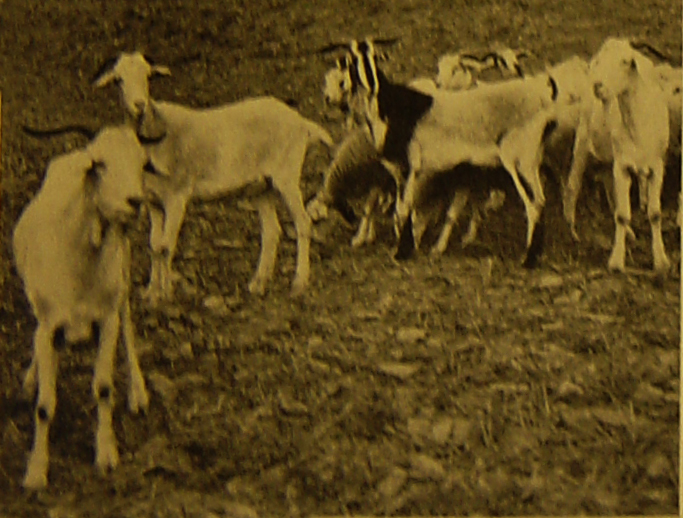
- Picture published in 1928 an informative work zootechnical, Rosell and coordinated by City, in which appears for the first time in Catalan literature zootechnical breed goats.
The first citation on the Catalan race corresponds to Rosell and Villa (1) et al. (1929), who described and located in the Catalan region of Pyrenees. Peter Martyr Rosell Vila (1882-1933) was a remarkable veterinarian inspectorate livestock hygiene, Professor of the School of Agriculture of Caldes de Malavella and Director of Livestock Services of the Commonwealth of Catalonia. He carried a prolific scientific career and we owe him an intense work of popularization and promotion of indigenous breeds of Catalonia. During his career he described and photographed many livestock breeds we know today, including goat Catalan.
Jordana Vidal (2) et al. Identifies the Catalan race in medieval paintings of the fourteenth century, specifically in a table originally from the town of Tora (Segarra), in which appreciates the most characteristic features of the goat Catalan: horns arranged in an arc, parallel·parallel and directed back.
Enric Canut (3) located during the early years 80 a large population of native goats in the area of Catalan pre-Pyrenees of Lleida. This author says, little time before you could count to Ager Valley (Noguera) Until 15.000 specimens of native white goats but then its census had been reduced considerably and there were only a few scattered flocks.
Meat (4) et al. (2005), states that the Catalan goat breed became extinct in the mid-twentieth century, but does not specify in what regions.
In 2004, Some nomadic shepherds in the Pyrenees, established around Mollerussa, I still remember some localities of Noguera and Pallars Jussà where Catalan goat had survived until very recent times.
Here's how we met some retired farmers who remembers the goat “country” or "of cabrada" and the Montsec confined to the area and traditional transhumance sheep xisqueta.
Finally, a year later these same farmers led us to the town of San Salvador de Toulon, they still retained a small core unit, owned by a single farmer. After a first approach to know their status, he saw that it was goat that had not been crossed or not imported from other regions. It was a local population very well preserved but reduced in size, integrated within 50 exemplars. This population has decreased significantly although there have been isolated examples in other herds coming. In 2011 and root echo that had the reclamation project of this new breed herds have been localized with individuals belonging to this ancient race. Unfortunately, the age of the last farmers, predicts an uncertain future for these goats. It also seems possible that there are copies feral.
ATArea distribution of race Catalan
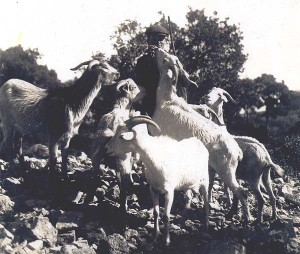
- Goats native Catalans to localida Camarasa (Noguera), during the years 1930.
The extension of the Catalan race was wide in the past. The information provided by farmers, the bibliography and a considerable number of photographic material has allowed us to place the race in western regions of Catalonia and a small part of central Catalonia.
Rosell Vila (1928) confined to the regions of the Catalan Pyrenees. However, Today we know that not all regions have been occupied by the Pyrenees breed. Some French authors (5) located in the Eastern Pyrenees another indigenous population called differently race Roussillon. Jordana Vidal et al. (2006) Catalan race placed in an area that includes the town of Tora (Segarra) and the Aran Valley.
The documentary of the photographic archive of the Institute of Lleida Studies (IEI), guards some pictures where sheep are bred goats xisqueta next race Catalan, transhumance in the summer of 1942, between the Aran Valley and the plain of Lleida. An extensive geographical area comprising the regions of Aran Valley, culd, Alta Ribagorça, Lower Ribagorça and Camilla.
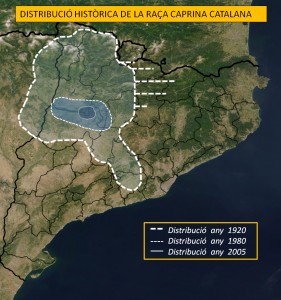
more recently, Canut (1980) locates during the decade of 80 Valley Ager, More specifically located in an area straddling the regions of Noguera and Pallars Jussà.
In La Pobla de Lillet (6) (Berguedà), there were also cattle breeding Catalan, but it seems that in this region there were other racial groups native and long black hair.
Outside the area of the Pyrenees and Pre-Pyrenees, found references to race older Catalan to other locations, specifically Capellades (Anoia), where during the first decade of 1910 some cattle fairs were held at county, promoted by the Barcelona Provincial Council and the City of Capellades, where the race was present. A Mediona (Alt Penedès), there were also cattle breeding Catalan, about early on 1940, although it influenced by race Murcia.
During the prospecting and research we have seen that this ancient native goat population has been little studied, probably because traditionally has received different denominations (7) and none of them matches the name of academic "goat Catalan", which is given at the beginning of twentieth century literature zootechnical.
Ethe Montsec, the last redoubt of the Catalan goat
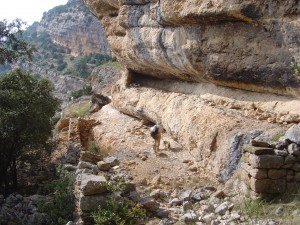
As we have indicated, the Montsec, have been the last country where the race has been preserved. It is a limestone mountain range 40 kilometers long which spans the province of Lleida and Huesca. Perfectly oriented east to west, is sectioned by two impressive gorges, dividing the range in its three traditional sections: Montsec Montsec d'Ares and Rubies (in Catalonia) and Montsec d'Estall (Ribagorça the Franja).
Today, Catalan race confined its former distribution area of the Montsec Rubies, even though less than 15 years also extended to the whole of this range and even the Tremp Basin, penetrating into the mountains Boumort.
It is appropriate to indicate that the Montsec Estall, this race was abundant, because even academically came to receive the designation of breed Benavarri.
Característiques morphological
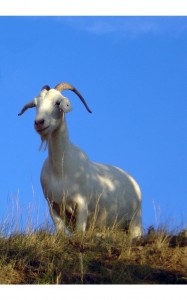
To describe the race we match the descriptions in the literature existing zootechnical, one of the early twentieth century, also the little old images that accompanied these descriptions and especially the recent information provided by farmers Pyrenees. Long conversations with these goatherds mostly already retired, but retain cattle tradition they received from their ancestors.
The Catalan goat consists of large animals, straight facial profile, proportions of long and marked beefing, white color uniform while platjades layers described in black and red. It is very colorful and animals of great vivacity. Traditionally livestock houses took advantage of the surplus milk produced these goats once the kids despopats. Until a few decades ago were still milked families.
BRIEF DESCRIPTION morphological breed goats CATALAN
Cap i coll: Profile straight or slightly subcòncau, no strong face and wide nose thick. Mucous membranes are pink, with a slightly darker spotted. The neck is long and strong, earrings are often copies with the neck but not always. Males beard, Some females also.
horns: are sized, arched and directed from front to back, types “diseased”. The horns are born the same·parallel and arched, known locally “horns copada”, but as the animal gets older their ends tend to separate and rotate slightly. Infrequently are females that have the type of horns “prisca” and that farmers call “horns Creston”.It is unusual for females appear Motxo.
Males have a more developed horn directed outwards, in that sex is frequent occurrence of specimens with horns reminiscent of the goat Roussillon.
Trunk: mediolini, well developed, lumbar straight line, chest deep, costellam ampli, the tail is short and horizontal trend.
Limbs: short and strong, sized hooves and clear color.
Ears: are medium, provision of horizontal or slightly falling. In males tend to hang vertically.
Pell: thin and without folds.
Mames: collected and globose and medium-sized nipples and taper.
Testicles: provided, symmetrical and well developed.
Cover: The coloration of this race is white uniform. There are specimens stained black or brown color they acquire a continuous extension that almost never appears forming lunar. With very low frequency units are gray.
Farmers recognize a third chromatic variety callers “sabinarda”, in such cases the coloring appears in shades of gray on a white background distal or cinnamon.
hair: average length. Shorter than the Pyrenean breed but longer than the goat Roussillon. In males have the fourth striker and neck for a little longer. Some authors have suggested that race Catalan, Vall d'Aran, had long hair. This was probably due to the importation of foreign breeds, Rosell says so and Villa (8) (1919) to note that in this region, the breed was already mixed with various French races in the early twentieth century.
Race white Celtiberian Catalan and presented numerous morphological differences (9), as they have historically occupied territories have been exploited and different forms under different management. From a color perspective, both races have a characteristic white color. However, whites Celtiberian has a very characteristic horns that unlike other Iberian breeds and is characterized by the horns fluted, triangular section, raised and rotating on themselves as if it were a screw.
(1) Rosell and Vila, P.M. et al. Agriculture Dictionary, Animal Husbandry and Veterinary. editorial Salvat. 1928
(2) Jordana Vidal et al. As Catalan and Pen. Editorial Lynx. 2006
(3) Canut, Henry et al. The cheeses in Catalonia. editorial Altafulla. 1980
(4) Carne et al. The white goat Rasquera: Morphological characterization and faneroptic. Zootecnia vol files. 56, No.. 215, p. 330. 2005
(5) Dad, Daniel. French sheep and goat breeds. Editions France Agricole. 2000. P. 250
(6) Information from Sitges and Ernest Fields, one of the last nomadic farmers in the Catalan Pyrenees that has gathered a significant collection·Collection of old photographs and numerous ethnographic objects of interest for more than 30 years of livestock.
(7) During the surveys conducted we have seen that this race, in central Catalonia receives the name "Goat Pallaresa", in the region of Ribagorza call "Goat Montsec" and finally Montsec call "goat Cabrada".
(8) Rosell and Vila, P.M. Importance of Livestock in Catalonia and zootechnical study of some of its regions. Royal Academy of Sciences and Arts of Barcelona. 1919.
(9) Alvarez Bartolomé, Santiago. Catalan goat breed. Feagas núm.36 magazine. 2010









